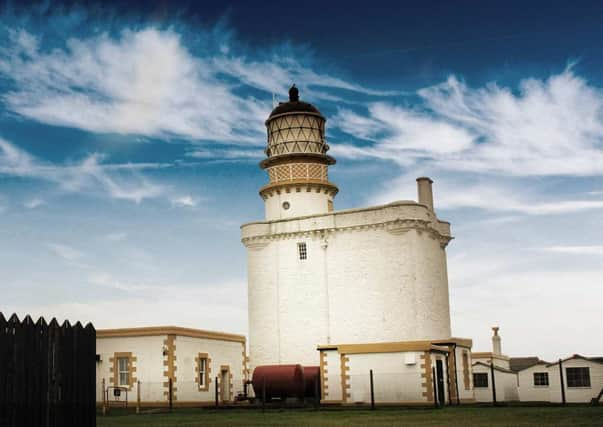On this day 1787: Scotland's first modern lighthouse is lit at 3.31pm


Kinnaird Head near Fraserburgh, built on an 16th Century castle, was the first lighthouse to be put into operation by the Commissioners of Northern Lights, and sustained the most powerful lamps of their time.
The lighthouse was constructed by Thomas Smith and his son in law Robert Stevenson, grandfather of author Robert Louis Stevenson, with a lantern set at a 120 feet above the sea on a corner of Kinnaird Head Castle.
Advertisement
Hide AdAdvertisement
Hide AdEach oil-burning lamp was backed by a parabolic reflector and arranged in three horizontal lines to produce a powerful beam for seamen working some of the toughest waters in Europe.
Previously, coal fires had generally been used to guide sailors to safety.
Mr James Park, a ship’s master, was appointed “Keeper of the light” at 1/- per night, The appointment was made on condition he had another person with him at the lighthouse every night, who he was to instruct in cleaning the landterns and lighting the lamps.
In clear weather according to Murdoch Downie’s New Pilot of 1791, the light could be seen 12 or 14 miles off.
Advertisement
Hide AdAdvertisement
Hide AdWhale oil was brought to Kinnaird Head by Smith, a tin smith of Broughty Ferry, which was a major whaling port of the day.
In 1824, a new lighthouse tower was built within the original castle tower with Robert Stevenson building a new lantern and reflector array.
In 1929, another first was recorded for Kinnair Head when it took possession of a radio beacon.
During WWI, enemy bombers struck the lighthouse only once despite repeated, heavy bombardments on the surrounding area due to Fraserburgh’s ammunmition works
Records show that on 19 February 1941, two bombs from an aircraft exploded 50 yards from the Lighthouse Buildings. Damage incuded 41 panes of broken glass.